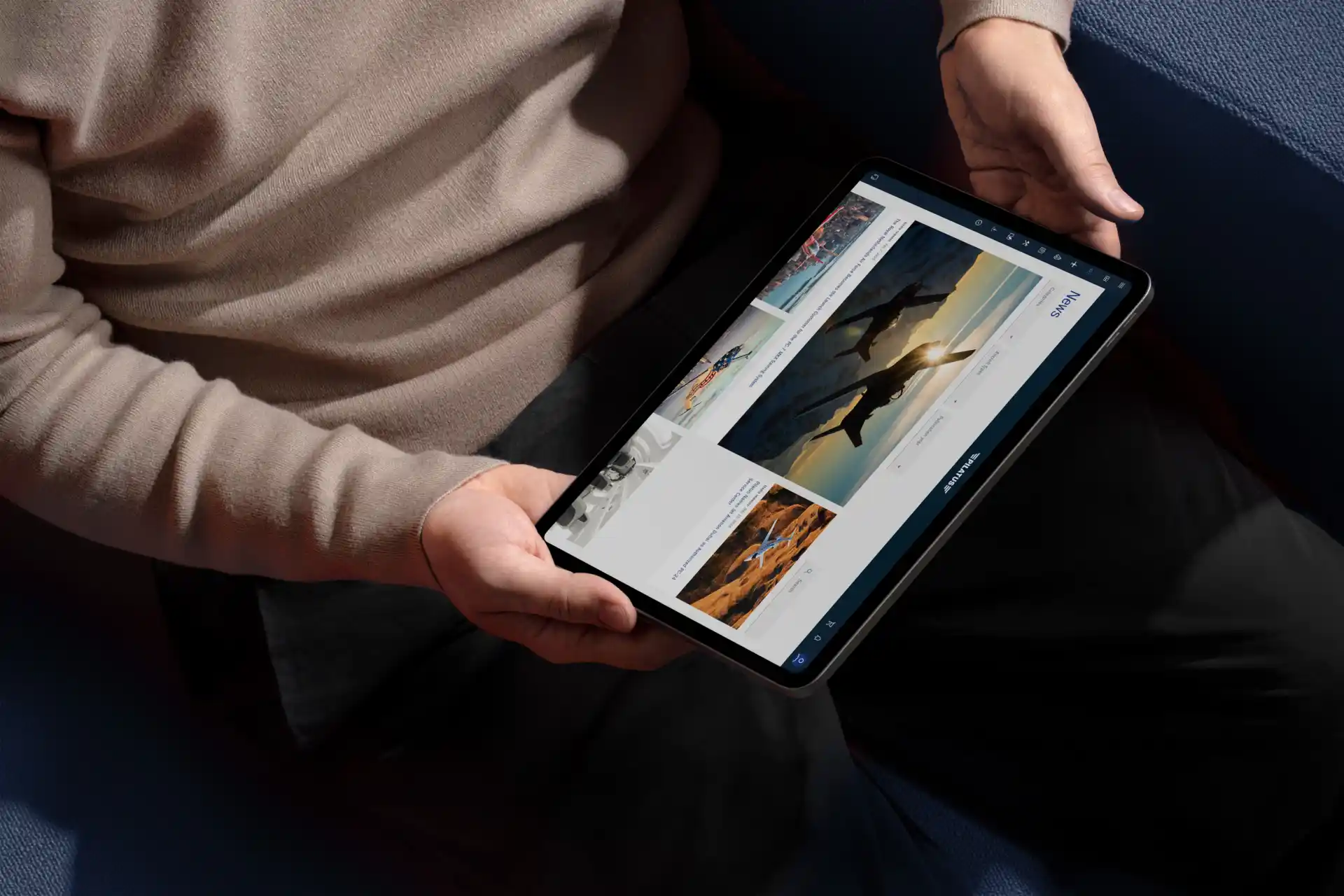A new aircraft? Really? Hardcore Pilatus fans will immediately notice that the PC-7 MKX looks very similar to the PC-7 MkII on the outside – and that’s a good thing!
The PC-7 MKX is an improved and modernised version of the iconic Pilatus PC-7 MkII. Based on the latter’s type certificate, Pilatus engineers made various upgrades to the design and some systems to ensure the success of this aircraft in the provision of basic training for young military pilots for years to come.
Meeting Diverse Requirements
An aircraft must meet numerous requirements to remain competitive in this segment of the training market. It has to be extremely robust for a start, since trainee military pilots in early stages of their careers may well unintentionally test just how much sink rate the landing gear is actually capable of withstanding! The aluminium structure is tried and tested, and offers definite advantages in terms of resilience, repairs and operations in extremely hot climates. A good basic trainer also has to have the kind of handling which gives useful feedback to the student pilot, allowing him to develop the “stick and rudder skills” so essential to becoming a successful military pilot later on. Once these skills have been thoroughly assimilated, the pilot can then concentrate fully on the wealth of information available on the various displays, on complicated tactical situations, on extreme situations such as interception at night and aerial refuelling, where maximum performance is required.
Ideal Conditions for an Upgrade
The PC-7 MkII already delivered excellent handling – which is why very few external modifications were made to the PC-7 MKX. If you look closely you will see that the spinner (the “nose”) is a little more pointed and aerodynamic, and the wingtips have also been equipped with small aerodynamic winglets. Some far more important and substantial changes have been made under the aluminium cladding and in the cockpit.
Recent years have seen a fundamental change in the way information is presented to pilots. Whereas a multitude of round instruments with mechanical pointers were used in the past to display e.g. altitude, air temperature, speed, position and aircraft attitude, state-of-the-art screens have now become a standard feature. Any sort of information can be presented on these “multi-function displays” with a much higher information density, for interpretation by the pilot.
In terms of avionics, mission pilots face crucial new challenges. Therefore, it is important that student pilots can hone their skills during basic training. For an even better overview, each cockpit now has three large screens for displaying a wide range of information depending on the mode selected. Some screens even have a touchscreen function like mobile phones. Crew comfort has also been enhanced: Martin-Baker ejection seats have been implemented, for example, and the air-conditioning system has been fully overhauled to provide a more ergonomic design for the student-instructor “workplace”. Accordingly, the crew will be free to focus all their attention on the training content in the future.
Ground Based Training System
Naturally, the aforementioned innovations have also been incorporated into the Ground Based Training System (GBTS). In addition to our best-selling computer and simulator technology, the GBTS also includes new approaches such as “Artificial Reality” (AR), “Virtual Reality” (VR) and “Mixed Reality” (MR). These technological advances ensure maximum training success for student pilots, in turn enabling them to reach their learning goal all the faster.
First Presentation in the Emirates
The PC-7 MKX passed its “acid test” in 2020, despite strict corona requirements, when a small Pilatus team presented the aircraft to Air Force Academy flight instructors in Al Ain (UAE) on some of the hottest days in the year with outside temperatures of up to 50 °C. A sweaty undertaking, but the effort was worth it! Further important findings for ongoing development were identified on that occasion. And to be the first to receive such unreservedly positive feedback we received from the UAE flight instructors also acknowledges the countless hours of research and development invested thus far.
One Question Remains: Why Is the PC-7 MKX Now Suddenly “Smart”?
On the one hand, the aircraft has become “smarter” due to the new avionics, and, on the other, the GBTS offers new attractive and “smart” solutions for the new generation of student pilots. The modifications also help ensure that this best-selling aircraft is now even more efficient and affordable to operate. Truly, no “smart” customer can do without it!

